Razer Iskur sold me on gaming chairs — after almost losing me
The Razer Iskur is a comfortable gaming chair with a unique feature
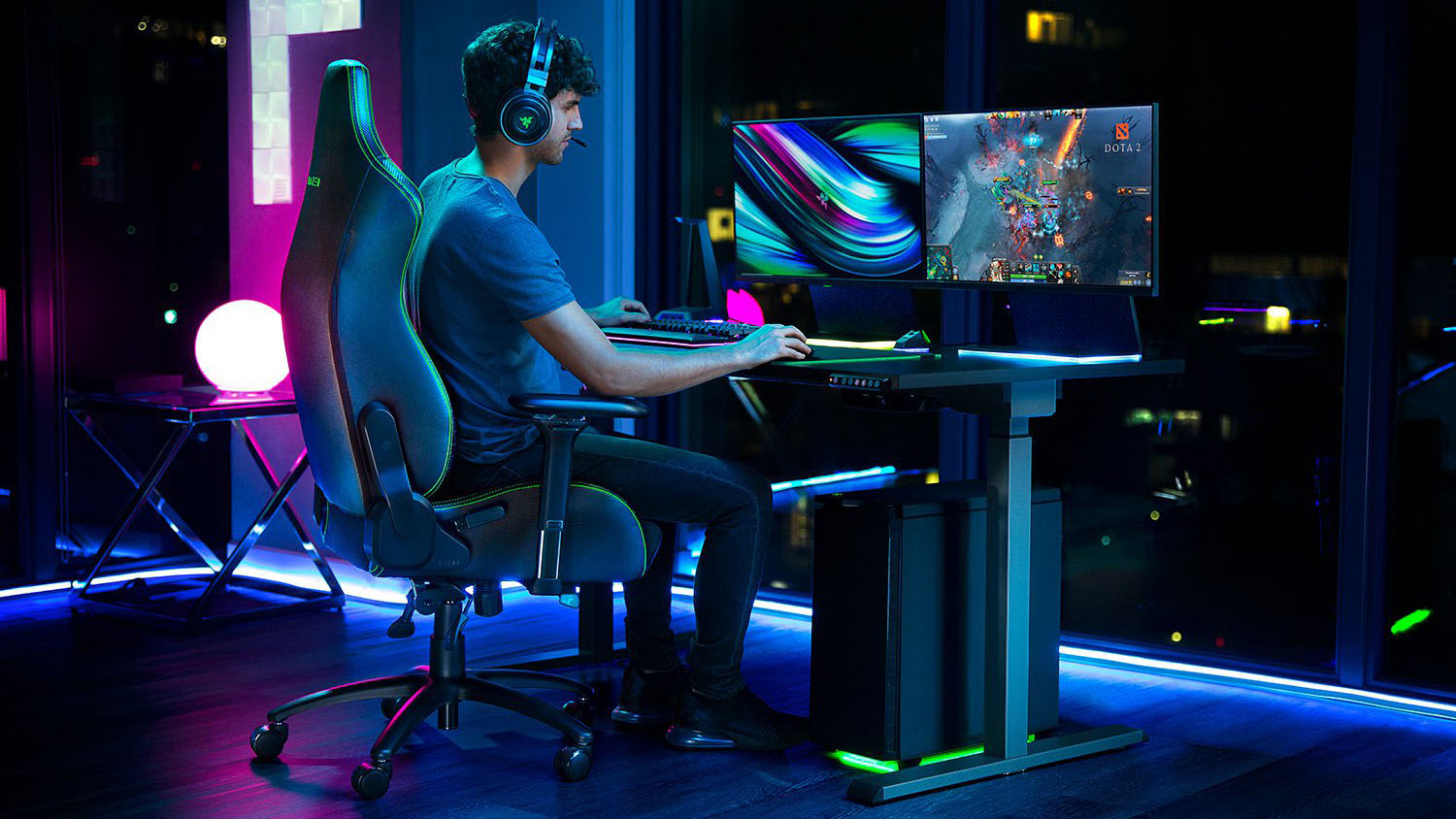
The Razer Iskur represents the peripheral manufacturer’s first foray into gaming chairs. That’s not a category we usually cover on Tom’s Guide, but I was interested in checking out this high-end seat for two reasons. First, Razer makes some of our very favorite gaming gear, and I was incredibly curious how it might tackle a purely mechanical device, with no electronics whatsoever.
Second: My regular office chair was literally falling apart.
- Buy the best gaming mouse
- Complement it with the best gaming keyboard
My journey with the Iskur so far has been generally comfortable, occasionally harrowing and, if nothing else, always interesting. While I can’t necessarily recommend a $500 gaming chair to every reader, it’s worth at least considering if you find yourself spending a lot of time working and gaming at home.
Because believe me, if you bought an office chair with the intention of sitting on it for an hour or two at a time each night, that may not cut it anymore.
Replacing an old chair
Like many others, I started working from home in 2020. That means that my living room has become an impromptu office. Luckily, I had a powerful gaming PC and a spacious desk, which made the transition relatively easy. Unfortunately, my chair was, to put it mildly, past its prime.
When I moved into my first NYC apartment eight years ago, I bought a $50 Renberget chair from Ikea. It’s not the worst chair I’ve ever sat in, but it’s fair to say that it’s nothing fancy. (There is actually no padding in the chair back; air pressure alone creates a cushion. It’s about as supportive as it sounds.) I never really intended for it to last eight years, but I think everyone knows how it goes: As long as a piece of furniture is not broken, there’s no huge rush to replace it. Before you know it, you’re sitting on a chair that wore out years ago, but you haven’t gotten rid of it because it hasn’t physically fallen apart underneath you.
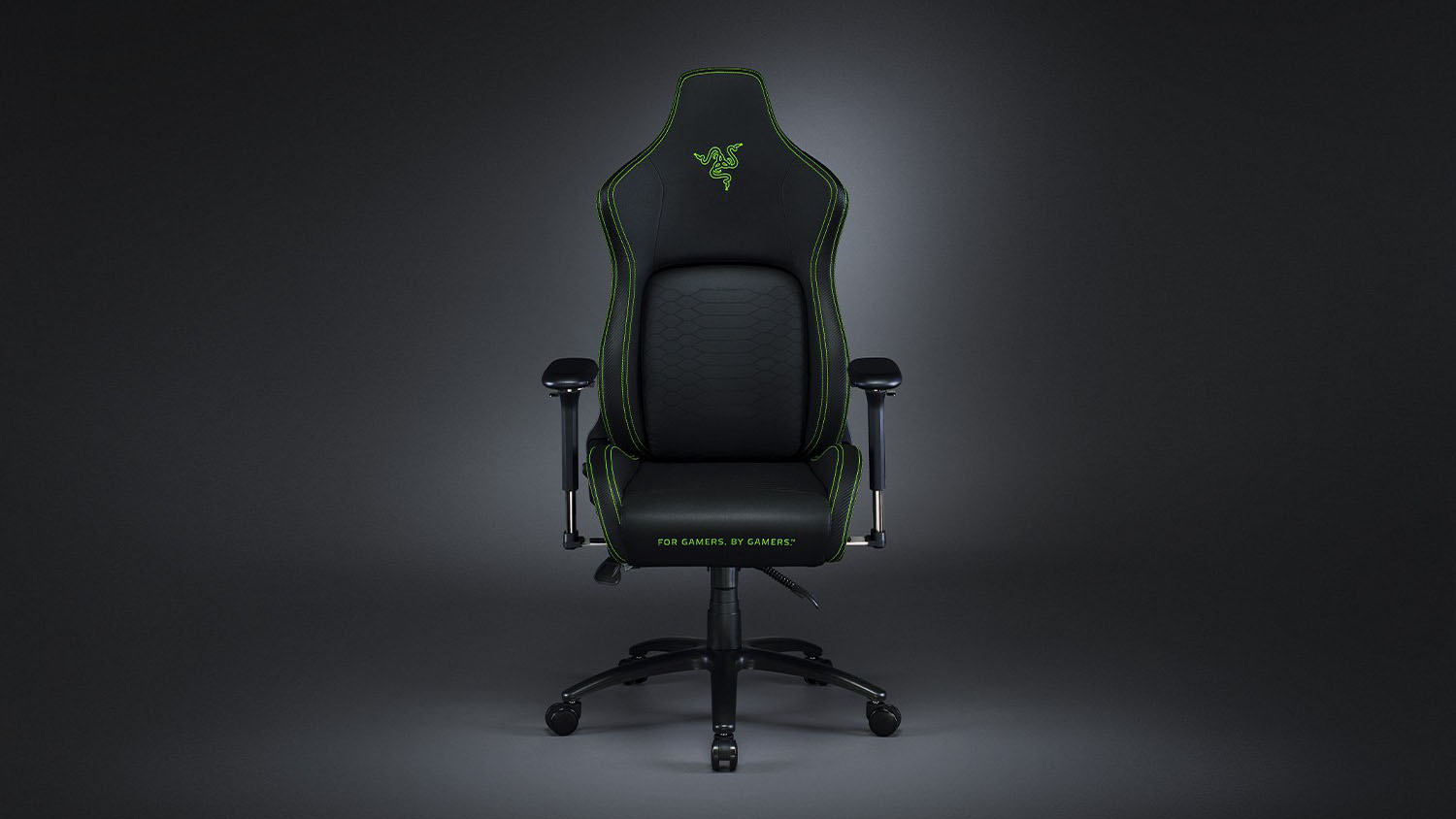
That’s why my ears (and my back) perked up when Razer announced its Iskur chair. Gaming chairs have something of a mixed reputation among both gamers and furniture experts. While they’re generally a lot better for your back than a cheap chair, gaming chairs don’t claim to offer any medical benefits — and a second-rate gaming chair has all the same problems as a second-rate office chair, just with a much more garish design. And speaking of garish designs, gaming chairs are often big, loud and angular — a far cry from the elegant, minimalist designs of upscale office chairs.
Sign up to get the BEST of Tom's Guide direct to your inbox.
Get instant access to breaking news, the hottest reviews, great deals and helpful tips.
Razer Iskur design philosophy
For those who haven’t seen the Razer Iskur before, it’s a large black chair with green highlights. Like an office chair, it has a high back, casters on the bottom for easy movement, a base with adjustable height options and supportive arm rests. Unlike low-end office chairs, however, the armrests are adjustable in three directions; it also lets you adjust the tilt of both the back and the seat.
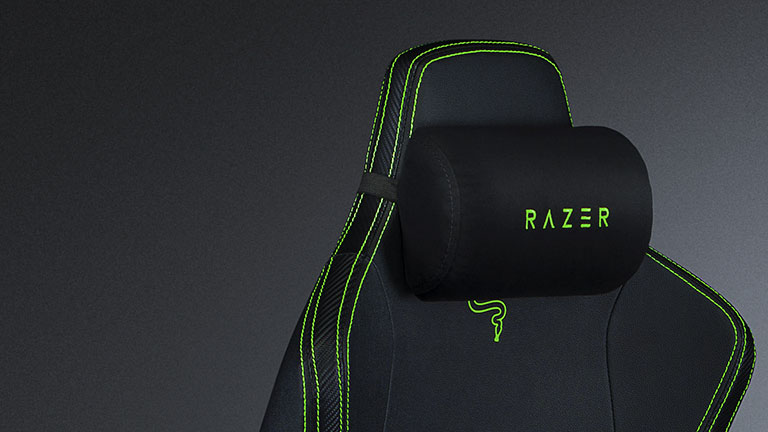
The Iskur’s unique feature, however, is its lumbar support. Rather than a mesh build with adjustable tension, or a simple support pillow, the Iskur has an extendable lumbar support column, which can be flush against the chair back, or extended at an angle of more than 30 degrees. It’s an incredibly useful innovation — and it very nearly compromised my whole Iskur experience. (More on this later.)
I spoke with Jeevan Aurol, senior manager of product marketing at Razer, to learn more about the Iskur’s design philosophy and potential benefits.
“Razer has always been a company that tries our best to look backwards on what has been done, and look forward in terms of what the industry needs,” he said. “For chairs, it was really no different.”
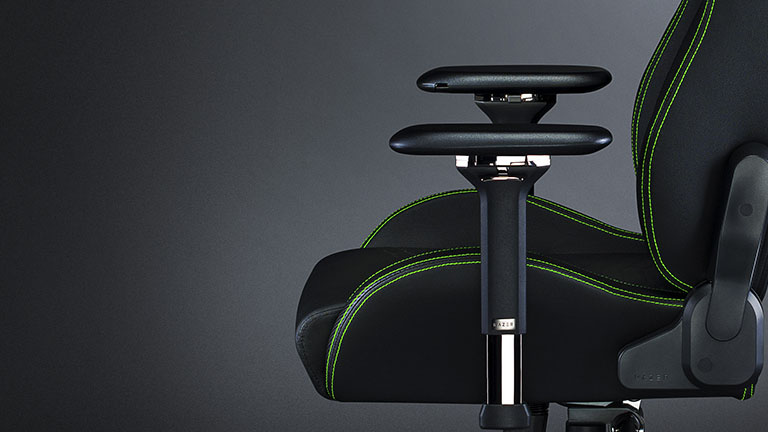
"A neutral spine position is what gamers need." — Jeevan Aurol, senior manager of product marketing, Razer
Interestingly, Razer’s desire to make a gaming chair has a personal angle. Its CEO, Min-Liang Tan, had a back problem, and went to a chiropractor to get it checked out. When Tan mentioned that he generally sat in a gaming chair, the chiropractor told him to get a normal chair instead. Tan believed that his company could create a product that married a gamer aesthetic with generous back support.
“Gaming chairs are moderately comfortable, and they do the job, but we dug deeper. Gamers actually sit a lot on their chairs,” Aurol told me. “Probably eight to nine hours a day, depending, especially because of the work-from-home thing. This number has multiplied. We looked at how much support gaming chairs actually gave, and the answer was ‘not a lot.’”
To oversimplify a complicated ergonomics issue, sitting in a “neutral spine position” — where the spine gently curves three times, and the neck sits directly above it — is good for your posture. Good posture begets good circulation, which begets less stiffness, which begets less pain, and so forth. A good chair, office or gaming, promotes neutral spine position and, more importantly, ensures that the user is sitting the same way each time.
“When you sit down and play a game, competitive or not, you’re always going to hold the mouse a certain way; you’re always going to interact with the keyboard in a certain way. It affects how you play,” said Aurol. “If the chair is rickety or flimsy, you’re always going to get into a bad position, all the time … A neutral spine position is what gamers need. They should be aware that this is what they require.”
The pros and cons of lumbar support
As mentioned above, the Iskur’s adjustable lumbar support apparatus is arguably the one thing that sets the chair apart from competing gaming chairs. In fact, even among office chairs, I couldn’t find a model that used a similar mechanism.
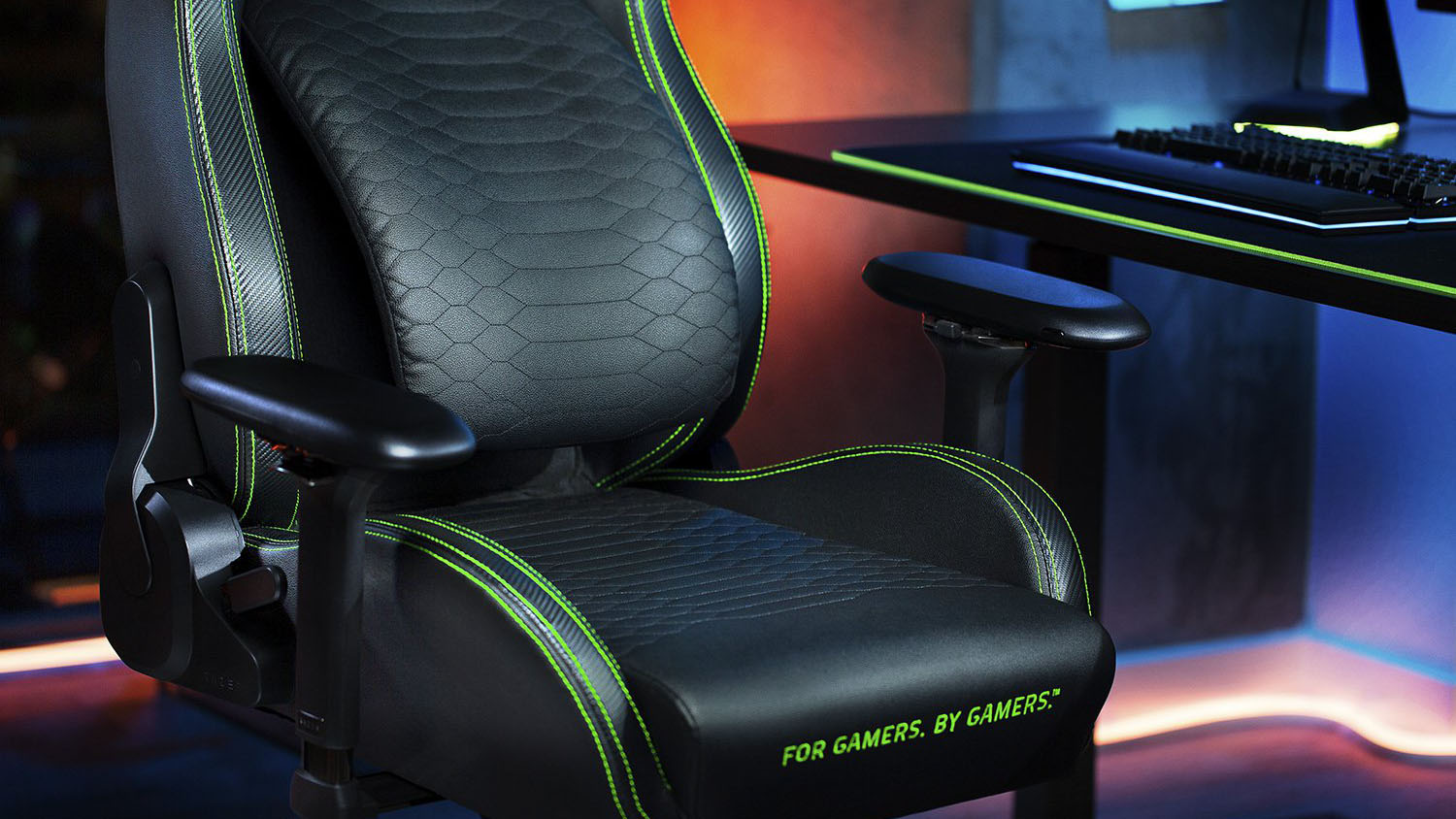
While it’s easier to see in action than to describe, there’s a small lever underneath the right side of the Iskur’s seat. Pull the lever, and the lower part of the backrest angles out, putting pressure on your lumbar vertebrae. You can push this all the way in, if you want to lean back, or extend it all the way out, if you tend to play your games leaning forward.
“You want to achieve a neutral spine position when you’re sitting down,” Aurol told me. “Iskur helps you achieve that because of its shape and the way it molds itself into your spine. That’s the biggest benefit you get over a traditional system.
“[The Iskur] doesn’t always support a lean-back position,” he continued. “Sometimes, gamers tend to sit forwards toward their screen, especially in the heat of the moment. They don’t lean back.” Because the Iskur’s lumbar support extends so far forward, gamers can still rest some of their weight on the chair, even if their rears are nowhere near the back of the seat.
With so much emphasis on the lumbar support system, I was eager to try it for myself. That’s why I was devastated when after putting the whole chair together (the process took about an hour and required two people, but wasn’t especially difficult), my lumbar support system wouldn’t move at all.
Without going into specifics, a gaming chair is just about the last accessory you want to break. The box itself is huge, and contains other space-consuming boxes — but that’s not even the biggest problem, since certain parts of the chair are impossible to take apart. (Specifically, the gas cylinder in the base; once it’s on, it’s on for good.) After about a week of back-and-forth e-mails, Aurol identified my problem: an overtightened screw on the lumbar support valve. Ever since I loosened it, the Iskur has worked absolutely beautifully, and the adjustable lumbar support is one of my favorite parts.
While I don’t want to harp on a problem that was, in the end, easily fixed, it did make me wonder: What would happen if a customer without direct access to Razer employees encountered a similar problem? When the chair was not functioning properly and in various degrees of disassembly, I didn’t have enough space to use my desk, or walk directly between my kitchen and my living room; this would be a huge problem if it happened to multiple people.
Thankfully, Aurol assured me that while the overtightened screw was present in a few Iskur review units, it’s been corrected in mass production, and no customer has run into a similar issue. Likewise, since the chair is designed to be assembled once and never taken apart again, Razer has a slightly different repair process than for, say, a mouse or keyboard.
“[We] have a bunch of spare parts,” he explained. “Depending on which part is working or faulty, we will send an individual part over, and you just send that part back. There is no need to send the entire chair back to us.” The chair’s warranty covers three years of mechanical wear and tear, and Aurol hopes that the Iskur can last for four to five years — or even longer — under heavy use.
Why buy the Razer Iskur?
Now that I’ve used it for a few weeks, I can say that the Razer Iskur is one of the most comfortable chairs I’ve owned, and a huge step up from the falling-apart $50 Ikea model. I can’t say for sure whether I’d prefer it to a fancy office chair, but that’s partially because office chairs have such a wide range of design choices, whereas gamer chairs tend to share a somewhat similar aesthetic.

I asked Aurol how — or whether — the Iskur stacked up to expensive office chairs, and he said that “there is no black-and-white answer.”
“I don’t think there is any one answer to support an office chair ‘winning’ over a gaming chair, or vice versa,” he said. “It really depends on the user’s preference.
“When you sit in an office chair, it’s generic. It’s comfortable. It works. When you sit in a gaming chair, it makes you feel plugged in. It makes you feel like you’re sitting behind the wheel of a supercar … I’d say the biggest difference is the psychological mindset and the overall aesthetic.”
There’s no denying that the Iskur has a clear “gamer” vibe, with its neon-green stitching, prominent Razer logo and “For gamers, by gamers” written right on the seat. I’m absolutely positive that some gamers will find this grating, but I’m equally positive that some will find it cool.
For me, I’m neutral on the Iskur’s aesthetics, but I’m extremely happy with the lumbar support. And so is my back.
Marshall Honorof is a senior editor for Tom's Guide, overseeing the site's coverage of gaming hardware and software. He comes from a science writing background, having studied paleomammalogy, biological anthropology, and the history of science and technology. After hours, you can find him practicing taekwondo or doing deep dives on classic sci-fi.


